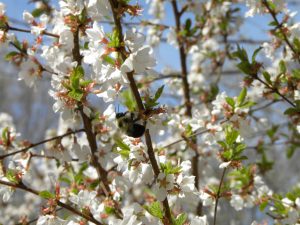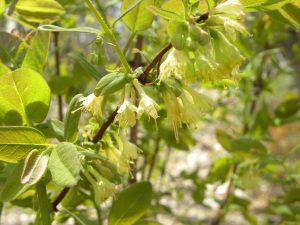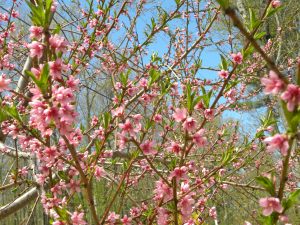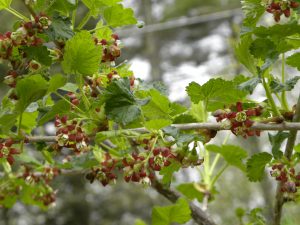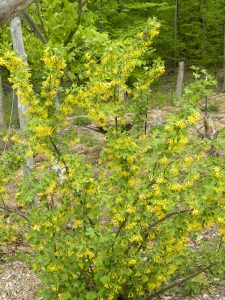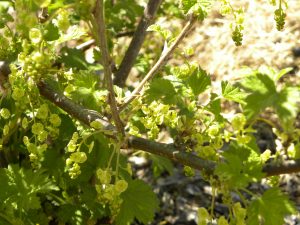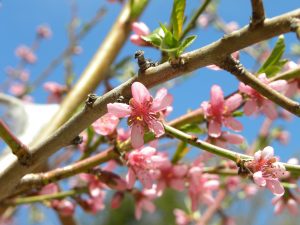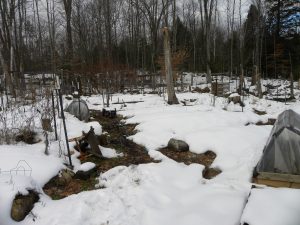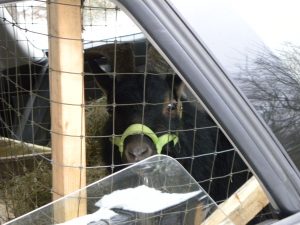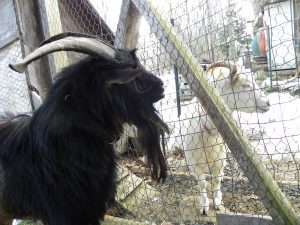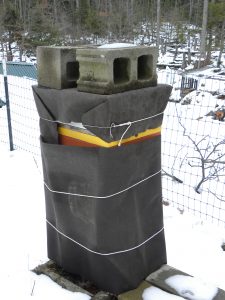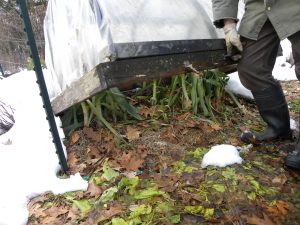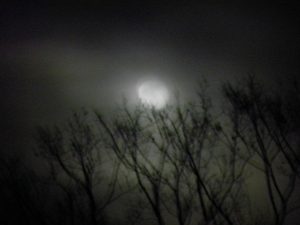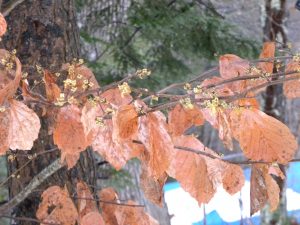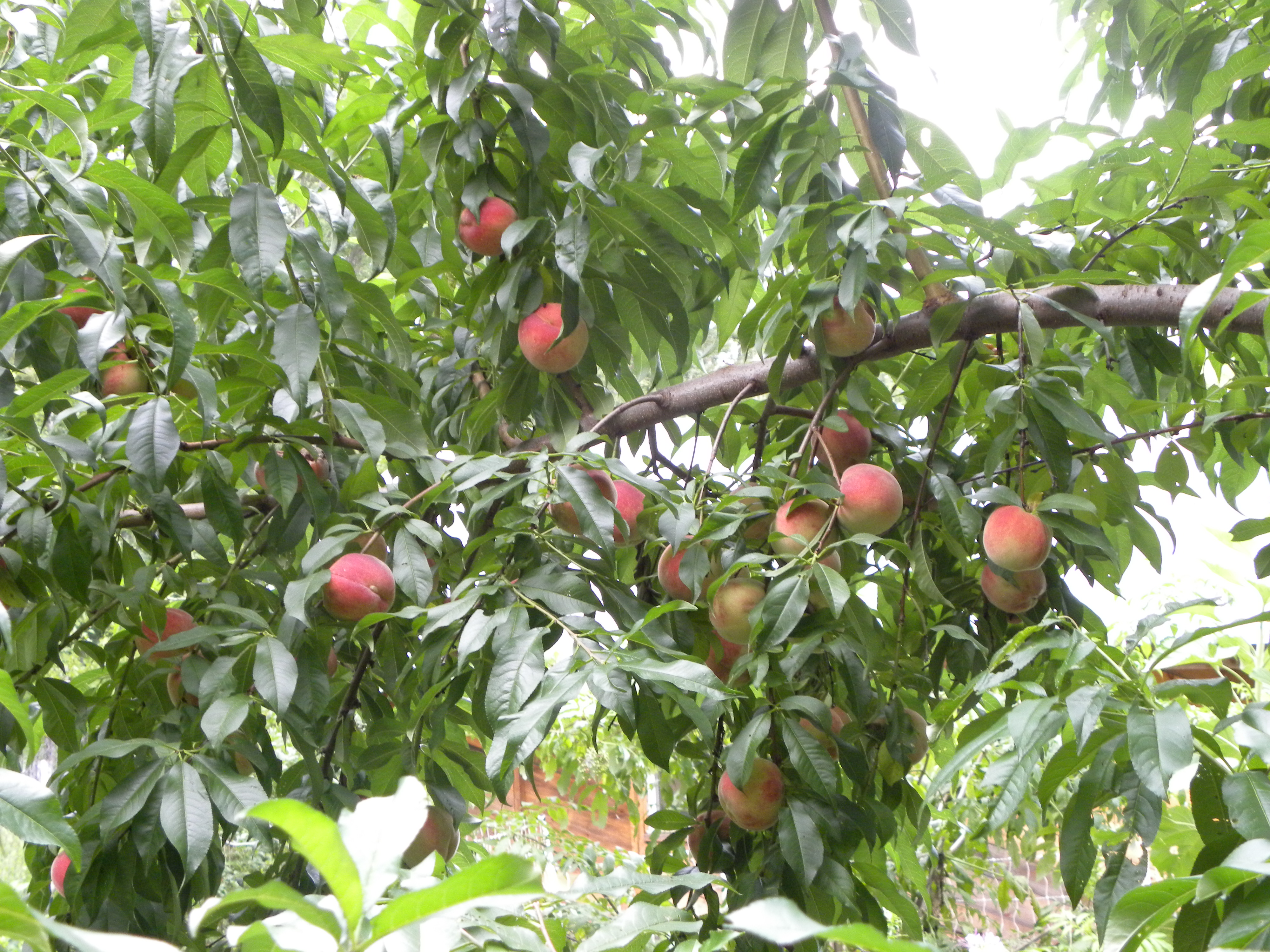August brought us mostly July weather, kicking our plants into high production, but slowing us down. Hot, sticky, uncomfortable – I’d still take it over an ice storm any day! Regular, sometimes torrential, rains brought us out of the latest drought completely. Amazing plant growth, the song of crickets and cicadas, and the crowing of a few too many roosters marked the month for me.
Our Work in August
August can be overwhelming with so much to do. It usually coincides with milder weather which helps, but not this time. We just can’t move as fast when it’s 90F and humid. But, we kept on, and a lot did get done, with harvesting and food preservation taking center stage.
Plants
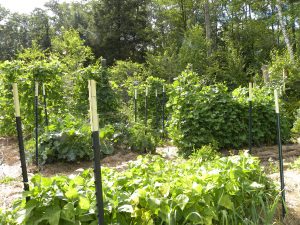
The Garden In August
Upkeep continued in the gardens. Tasks like trimming tomato suckers, thinning root veggies, keeping the beans on the trellises, and redirecting winter squash creeping over other crops. Planting for fall harvests of greens, radishes, and beans plus more cover crops.
And, picking! Here in our gardens, beans, summer and winter squash have been coming in strong, along with cucumbers, tomatoes, basil, radishes, greens and more. I’ll give you exact numbers in the harvest section coming up.
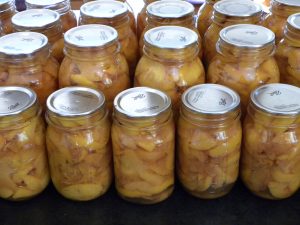
Canning Peaches
The big question is always how to stretch this bounty into the colder months. Some crops store well with simple methods, others need more investment. The kitchen and I were occupied often with freezing, lacto-fermenting (using our own salt this year!), dehydrating, and canning. The weather made those last two harder and I put off what I could for when the heat subsides.
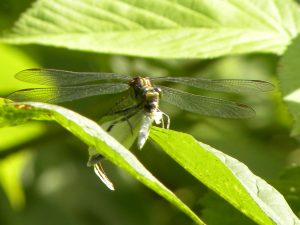
Dragonfly Eating a Cabbageworm Moth
A few pest problems did catch up with us in August: imported cabbageworms and rodents. This year I didn’t cover my brassica crops to guard against the moths. It was partly out of curiosity… and I did discover that the worms really proliferate later in the season. They definitely preferred some plants (collards) and areas (too shady) over others, which I’m noting and thinking on for future planning. Next year, I will add row cover again for a break from picking them off, which does get tedious. The rodents are harder to address. To some extent there are larger cycles that I don’t control that make for better and worse years. There have even been articles about this year’s
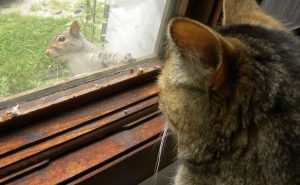
So Many Squirrels!
squirrel population explosion and resulting problems on roads. Our cats help with their hunting, but squirrels are too much for them. I see how those little terrier dogs can be valuable, but we’ll stick with cats for now.
We continued with weed management in the fields, particularly keeping an eye on wild lettuce and thistle from which one flower can yield tens if not hundreds of plants.
Animals
We had regular upkeep and tending of our critters, especially keeping their water access constant in the heat. Hay came in mid-month. We don’t make our own, but get it locally. It was a big job just to pick up and unload the two hundred bales we could cram into our various outbuildings. All our reorganizing paid off by allowing us to store that much – about 50 more than we’d thought we could fit. What a relief it is to have a good crop put up for the coming year!
The bees aren’t having a great year. There seems to be a nectar shortage, noted by many beekeepers in the Seacoast. I have great new queens and busy bees, but without more food access they are limited in raising brood and are not able to store for the winter. They were also exhibiting robbing behavior when I inspected, which again pointed to not enough food. Mid-month I decided to start feeding them sugar syrup. I just didn’t feel I could count on a great fall flow to make up for the poor season. The good news is that the last time I opened them up, I could distinctly smell Japanese knotweed nectar. I know that knotweed is a plant that causes some problems and I promise I haven’t planted it, but I have to be honest: it is a huge boon to the bees. Good or bad, black or white, one or the other are dichotomies that don’t hold up that well in nature. Life is complicated!
I guess I am grateful that I didn’t try to grow my apiary this year. A few years ago I was trying an expansion project when we got hit with that intense drought and I ended up buying more sugar for those dozen colonies than I had over all my previous years of beekeeping combined.
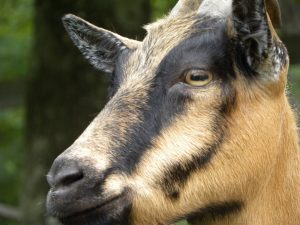
Our Animals Deserve a Good Life
A difficult task this month was harvesting the young boy goat. For those of us who didn’t learn that skill when we were young, it is a tough part of farming to get used to and honestly makes me wonder if I can keep doing it some years. But then I see a film like “Eating Animals” which Seacoast Permaculture partnered with The Music Hall to show in late August. It looked at the cruelty and negative environmental and human health impacts inherent in modern, industrial animal keeping for meat, eggs and dairy. Truly, deeply upsetting. Death is the kindest thing that happens to these creatures. I think only people who care about animals and find it hard to take their lives should raise them, and this strengthens my resolve to keep at it. It’s a good reminder as we move into our season for harvest of meat, and probably a good topic to write about more often.
August’s Harvest
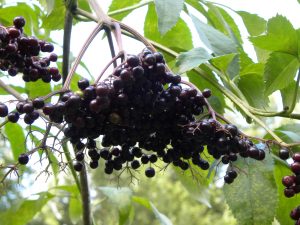
Elderberries
Here’s what I brought in from the gardens this month: 79.25# yellow summer squash, 12.75# zucchini, 47# string beans, 16# cucumbers, 6.75# kale & collards, 75 radishes, .75# celery, 1# broccoli, 9.25# tomatoes, 5# basil, 2 leeks, 2 carrots, 190# long pie pumpkins, 1# delicata winter squash, 22# peaches, 1.75# elderberries, and 5# clove currants. There were also grapes and raspberries, but they didn’t make it as far as the kitchen for weighing!
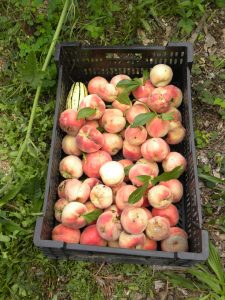
Our Own Peaches!
I brought home from local sources 23# of blueberries, 11 5-gallon buckets of gleaned apples (wild in public places) for the goats (I got tired of weighing them so started measuring them by bucketload), and enough peaches to can about 50 quarts.
From the animals we received 181 chicken eggs, 105 duck eggs, 10.9 gallons of milk, and 16# of meat.
We only made 421 kwh from the PV solar panels because there was a problem with our inverter resulting in the system being off for a week. There were a lot of cloudy days as well. Even though the days are getting noticeably shorter now, I think September will still be a better month.
What we are still eating from previous years: honey, canned peaches, blueberries and strawberry jelly, dried kale and beans, frozen eggplant, pesto, and salsa.
Looking Ahead
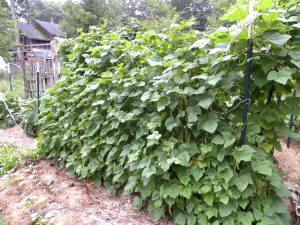
Pinto Bean Plants Flourishing
Given the current forecast for an abnormally hot month, I expect to bring in a lot of produce and be working to preserve it. We have tremendous winter squash vines that I hope will set a lot of fruit – it’s hard to tell under the dense foliage – and the tallest sunflowers I have ever grown. I expect I’ll have to compete with the squirrels for those. When it gets cooler I can get back to canning and we can work on harvesting meat.
It’s also time to start paying more attention to larger world issues with elections and other excitement coming up… so, yes, I expect it to be busy but I still plan to enjoy the warmth and the sun and the sounds of summer all month long.
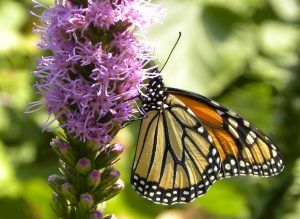
Monarch In The Garden
